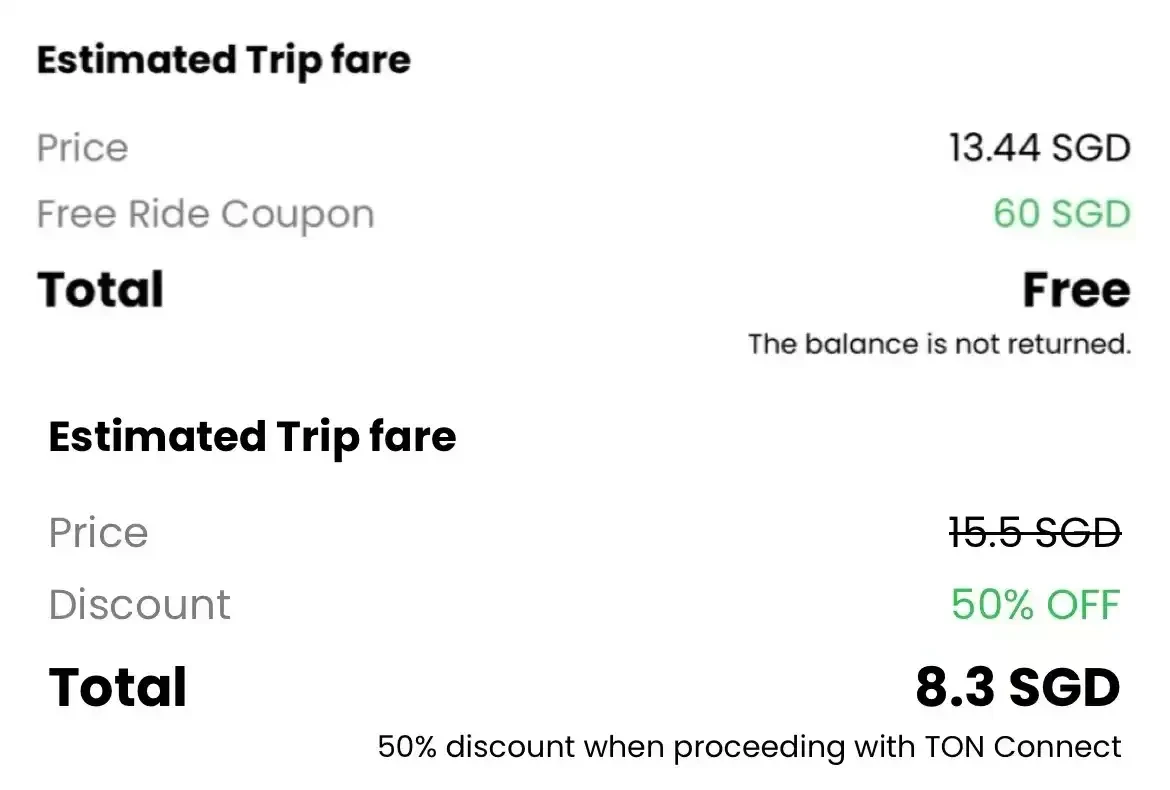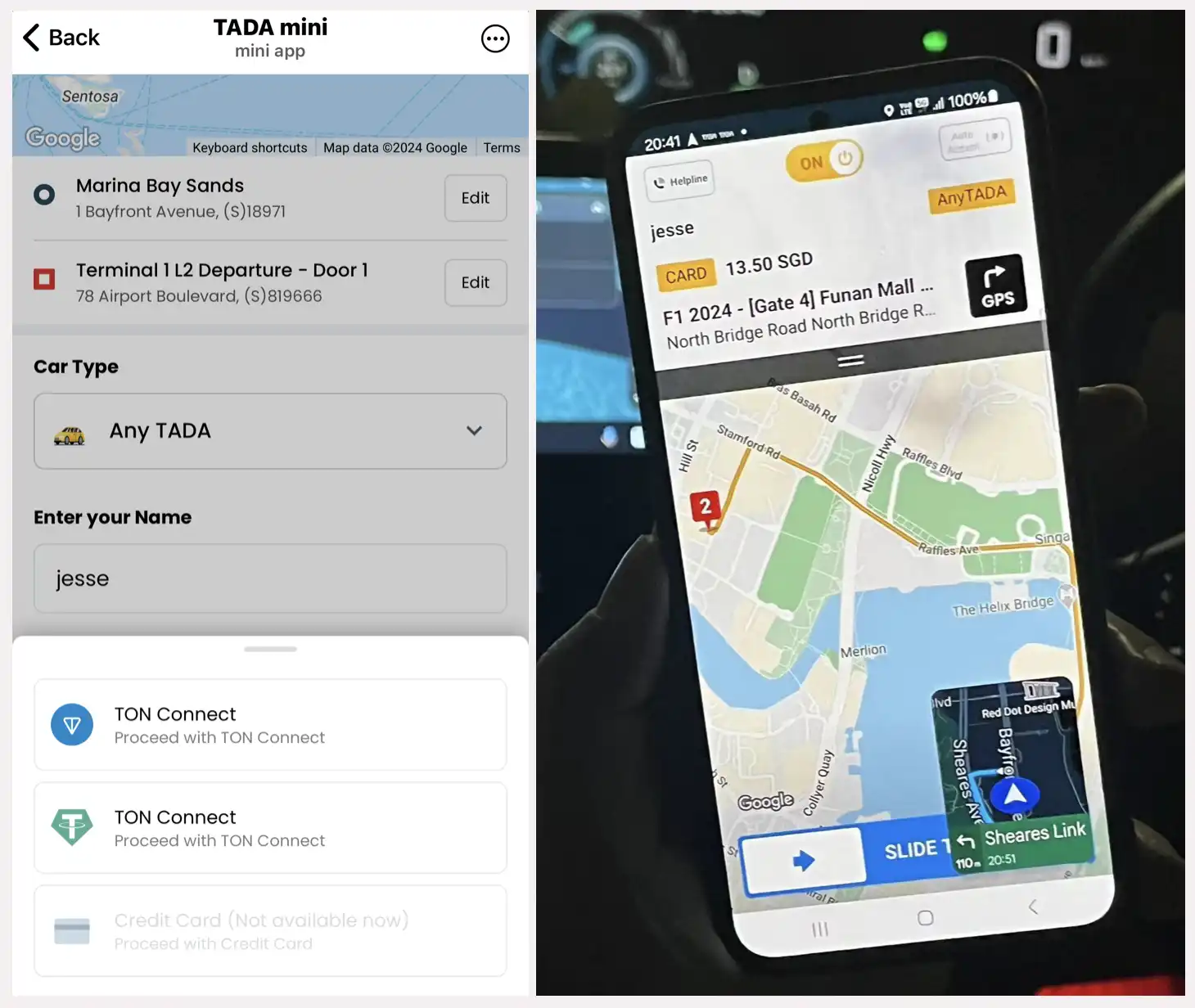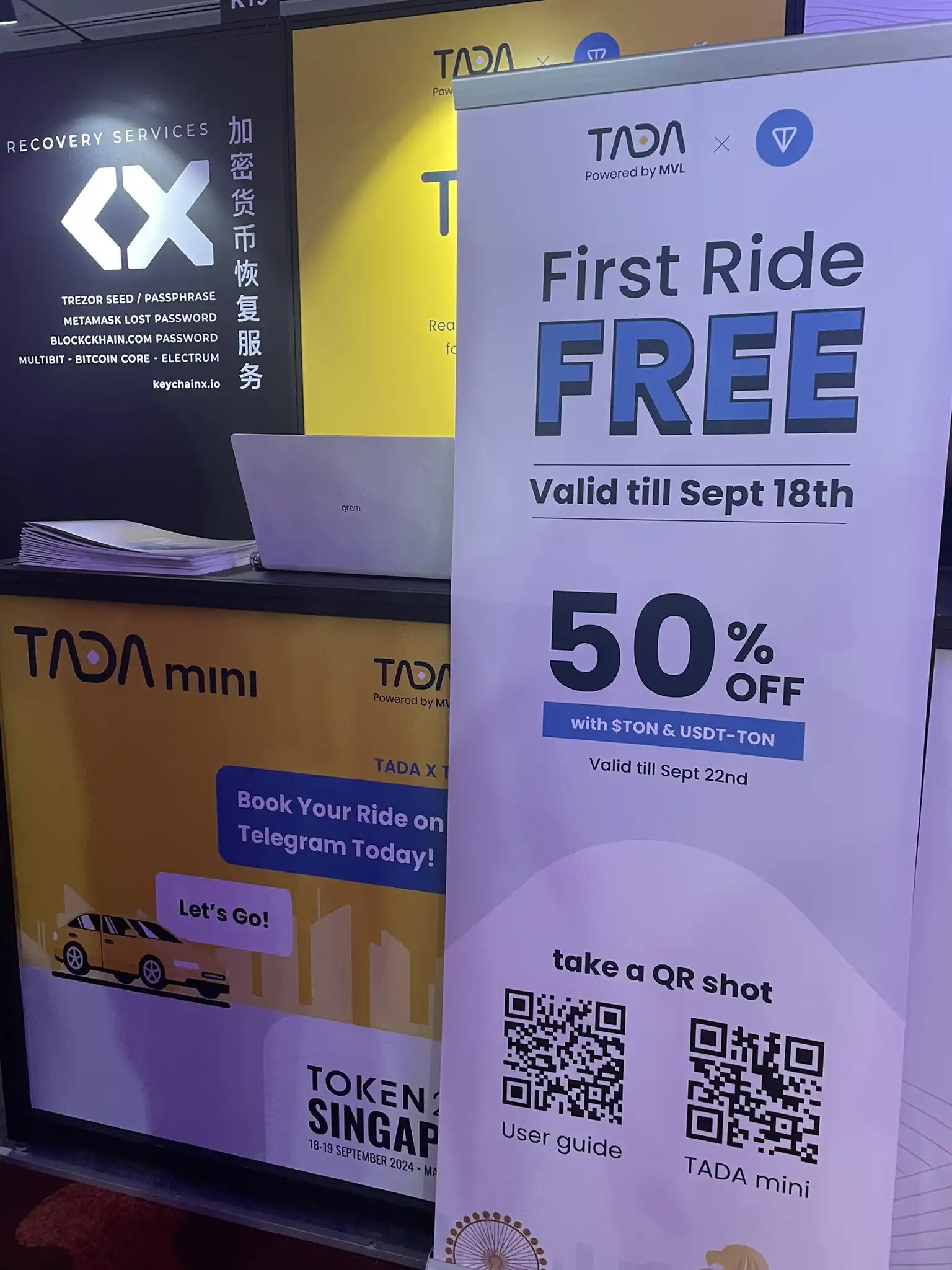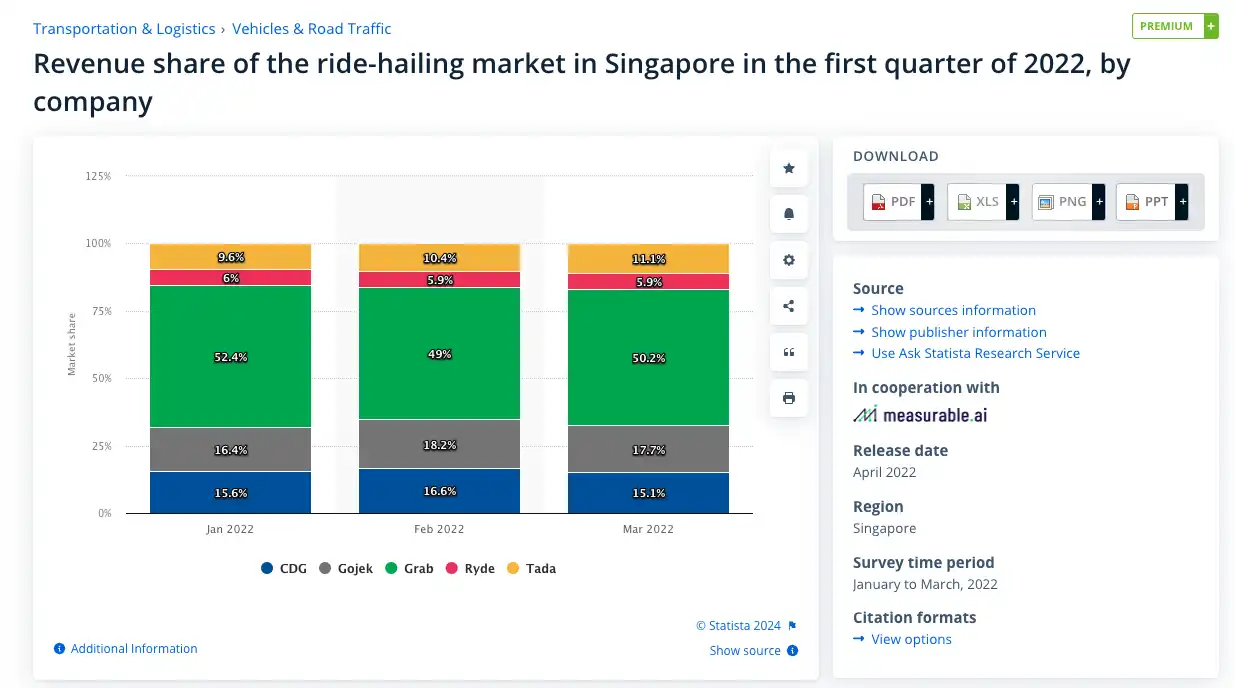Tiền điện tử tham gia vào cuộc chiến trợ cấp gọi xe, ứng dụng taxi Web3 này trở nên nổi tiếng ở Singapore
Original author: Kaori, BlockBeats
Original editor: Jack, BlockBeats 
During the Mã thông báo2049 event, Grab no longer seemed to be the first choice for cryptocurrency participants. The largest online ride-hailing platform in Southeast Asia was overshadowed by an app called TADA.
TADA invitation links are circulating in major cryptocurrency group chats. In Singapore, where the starting price is 50 yuan per person, the cost of choosing TADA is sometimes only a fraction of Grab. According to BlockBeats actual test, taking an ordinary car from Changi Airport to Golden Sands Bay costs about 112 yuan, about 20.5 Singapore dollars, using Grab, and 84 yuan, about 15.4 Singapore dollars, using TADA, which is about 25% cheaper.
Top: New users get a 60 SGD free taxi quota; Bottom: The second and subsequent transactions enjoy a 50% discount. Millions of subsidies to divert traffic to the TG mini program
According to TADAs official policy, the first 4,000 users who use the TADA Telegram Mini App to hail a taxi during the Token 2049 conference will enjoy a free first-order quota of 60 SGD, and will enjoy a 50% taxi subsidy like all Mini App users thereafter. According to preliminary calculations by BlockBeats, TADAs subsidy cost in 5 days is at least 600,000 SGD, or about 3 million RMB.
It is rare for a small online ride-hailing platform to invest millions of cash subsidies in a short period of time. However, it is interesting that the large subsidies did not bring traffic to TADAs mobile app. To get the taxi subsidy, users must use the Telegram Mini App launched by TADA not long ago, and need to use $TON or $USDT to pay through the TON wallet.
The experience of using TADAs Telegram Mini App is the same as using the WeChat Mini App to hail a taxi. Users can choose the car model and payment method. It is worth noting that users cannot choose to pay by credit card. The platform driver will display the users payment type as bank card payment on the application terminal.
Left: TADA’s Telegram Mini App taxi-hailing interface; Right: TADA driver’s mobile phone interface
According to TADAs official website, the platform does not charge drivers a percentage commission. Except for financial payment fees such as bank cards, all fares belong to the drivers. However, some platform drivers told BlockBeats that TADA actually still charges a certain percentage of commission, but its percentage is the lowest among all Singapore taxi platforms.
According to BlockBeats, TADA charges drivers the following: no platform fee when the fare is less than S$7, a S$0.6 platform fee when the fare is between S$7 and S$18, and a S$0.8 platform fee when the fare is over S$18. This means that drivers only pay a maximum of 8.6% of their income for each trip, and can keep a larger proportion of their income for long-distance trips. In comparison, mainstream online ride-hailing platforms such as Grab take a commission of around 20%.
The zero commission model makes TADA well-recognized among Singapores online car-hailing drivers. According to Channel News Asia, many drivers on the Grab or Gojek platforms have said that their income has dropped recently due to the low prices of platform orders. Although the number of orders for drivers on the TADA platform has decreased, their income has not been affected too much. During the Token 2049 period, the original price of using the TADA Mini App to go from the city to the airport was about 30 Singapore dollars, which was 60% more expensive than the average cost of 20 Singapore dollars on the Grab platform. Users need to use a 50% discount to enjoy a more favorable price.
Left: Grab taxi fare; Right: TADA taxi fare
High platform revenue and low ride costs have also raised questions about the source and sustainability of TADA’s subsidies, and many users understand that this will not be the case forever unless TADA finds a way to make money in other ways. As of writing, Singapore users can no longer enjoy the 50% ride subsidy through TON network payments.
With an annual revenue of 21 million US dollars, has Web3 consumer applications been successfully implemented?
Interestingly, when many people first used TADA, they mistook it for a traditional ride-hailing platform. It was not until they saw the TADA booth at the main venue of Token 2049 that they realized it was actually a blockchain company.
TADAs parent company, Mass Vehicle Ledger (MVL), was founded in 2018 by Kay Kyeongsik Woo, who founded the Korean travel app easi 6. Unlike traditional online ride-hailing platforms, MVL has positioned itself as a blockchain company from the beginning, exploring the online ride-hailing business through the online ride-hailing service TADA without platform commissions and token economic incentives. With the growth of TADAs business, MVL has gradually grown into a company with more than 300 employees, with businesses in travel services, automobile manufacturing, energy and data.
TADA’s booth at Token 2049; Image source: X
Competition in Singapores online car-hailing market is extremely fierce. According to data from the Land Transport Authority (LTA), the number of taxis has more than halved since it peaked at 28,736 in 2014, dropping to a new low of 13,330 in May this year. At the same time, the number of private hire cars (including self-drive rentals and online car-hailing) increased from 18,847 to 84,413 during the same period, an increase of 347%.
Currently, the five ride-hailing platforms that have obtained LTA licenses are Grab, GoJek (GoTo), Zig (CDG), TADA and Ryde. In the first quarter of 2022, Grabs market share reached 50%, while TADA only accounted for about 10%.
Singapore’s online ride-hailing market share in the first quarter of 2022
However, TADAs market position has gradually found an advantage in the competition. In 2023, according to documents submitted to the Accounting and Corporate Regulatory Authority of Singapore, TADAs parent company Mass Vehicle Ledger (MVL)s revenue increased from S$6.3 million in 2021 to S$27.5 million in 2022, and the companys losses also dropped from S$9.7 million in 2021 to S$5.4 million in 2022, a reduction of nearly 45%. More than half of the revenue comes from travel and delivery services, while the crypto business accounts for 37% of total revenue. In the first quarter of 2024, with its entry into the Thai market, TADAs CEO Sean Kim announced that TADA has become the second largest online car-hailing platform in Singapore. In addition, TADAs expansion plans also include the Hong Kong and Korean markets.
MVL is one of the industry pioneers in exploring and promoting application scenarios for cryptocurrencies. However, TADA’s business is far from smooth sailing on the road to developing “Web3 consumer applications.”
The successful attempt of Telegram Mini App is a new project launched by TADA in recent months, with a clear target of participants of various Web3 activities in Southeast Asia. Prior to this, TADA had tried a variety of new user activities such as Take TADA and Earn Bitcoin and Invite Friends to Join TADA and Earn Bitcoin, but the team found that it is extremely difficult and costly to convince a user who has never been exposed to cryptocurrency to buy cryptocurrency just for taking a taxi.
Before launching the Telegram Mini App, MVL considered providing Web3 services to online ride-hailing drivers as its main business, including providing drivers with multi-chain wallets and DeFi products, DePIN data maps that provide better routes through data analysis, and RWA vehicle projects that provide drivers with reasonably priced vehicles. However, it has always been difficult to make a splash in the market.
Therefore, starting with Web3 users, promoting the adoption of on-chain payments has become the core appeal of the MVL team in launching the Telegram Mini App during the TOKEN 2049 conference. As the saying goes, demand leads to the emergence of applications. On the one hand, the demand for travel increased significantly during the conference. On the other hand, the pricing of platforms such as Grab is higher than TADA under the subsidy policy, and users are motivated to pursue cost-effectiveness. However, with the end of the subsidy activity, although the taxi price higher than Grab will bring higher income to drivers, for consumers, what is the competitiveness of TADA?
This article is sourced from the internet: Cryptocurrency involved in ride-hailing subsidy war, this Web3 taxi app became famous in Singapore
Related: Grayscale changes its leader. Why did the old crypto company choose a Wall Street helmsman?
Original article by Leo Schwartz, Fortune Magazine Original translation: Luffy, Foresight News Peter Mintzberg has officially taken over as CEO of Grayscale, handing power to a Wall Street veteran at one of the oldest companies in the cryptocurrency industry. Mintzberg previously held senior positions at Goldman Sachs and BlackRock, and the appointment raises questions about Grayscale and the future direction of the cryptocurrency industry. Under the leadership of former CEO Michael Sonnenshein, Grayscale brought traditional investors into the crypto space through its Bitcoin Trust product. Then in August 2023, Grayscale won a legal battle with the U.S. Securities and Exchange Commission (SEC), which advanced the process of the Bitcoin ETF. Sonnenshein joined Grayscale as a salesman in 2014 and became CEO in 2021. However, while Grayscale paved the way for…












